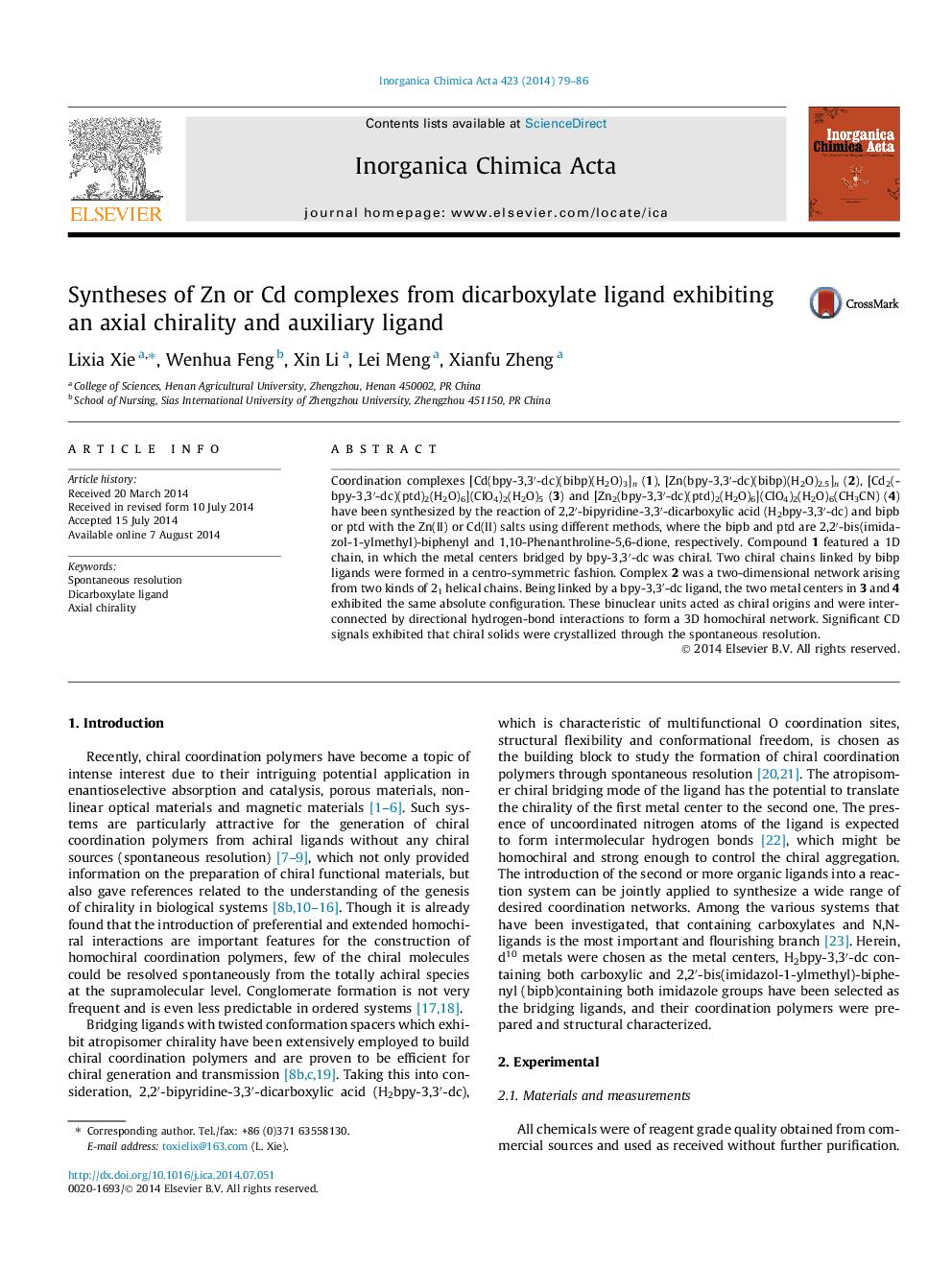| Article ID | Journal | Published Year | Pages | File Type |
|---|---|---|---|---|
| 1309441 | Inorganica Chimica Acta | 2014 | 8 Pages |
•Chiral coordination compounds were obtained through spontaneous resolution.•The introduction of second ligand was applied to synthesize desired compounds.•Ligands with potential chirality and with ability of forming hydrogen bond were used.
Coordination complexes [Cd(bpy-3,3′-dc)(bibp)(H2O)3]n (1), [Zn(bpy-3,3′-dc)(bibp)(H2O)2.5]n (2), [Cd2(bpy-3,3′-dc)(ptd)2(H2O)6](ClO4)2(H2O)5 (3) and [Zn2(bpy-3,3′-dc)(ptd)2(H2O)6](ClO4)2(H2O)6(CH3CN) (4) have been synthesized by the reaction of 2,2′-bipyridine-3,3′-dicarboxylic acid (H2bpy-3,3′-dc) and bipb or ptd with the Zn(II) or Cd(II) salts using different methods, where the bipb and ptd are 2,2′-bis(imidazol-1-ylmethyl)-biphenyl and 1,10-Phenanthroline-5,6-dione, respectively. Compound 1 featured a 1D chain, in which the metal centers bridged by bpy-3,3′-dc was chiral. Two chiral chains linked by bibp ligands were formed in a centro-symmetric fashion. Complex 2 was a two-dimensional network arising from two kinds of 21 helical chains. Being linked by a bpy-3,3′-dc ligand, the two metal centers in 3 and 4 exhibited the same absolute configuration. These binuclear units acted as chiral origins and were interconnected by directional hydrogen-bond interactions to form a 3D homochiral network. Significant CD signals exhibited that chiral solids were crystallized through the spontaneous resolution.
Graphical abstractChiral coordination compounds based on ligand with potential chirality and ligand with ability of forming hydrogen bond, were obtained through spontaneous resolution.Figure optionsDownload full-size imageDownload as PowerPoint slide
